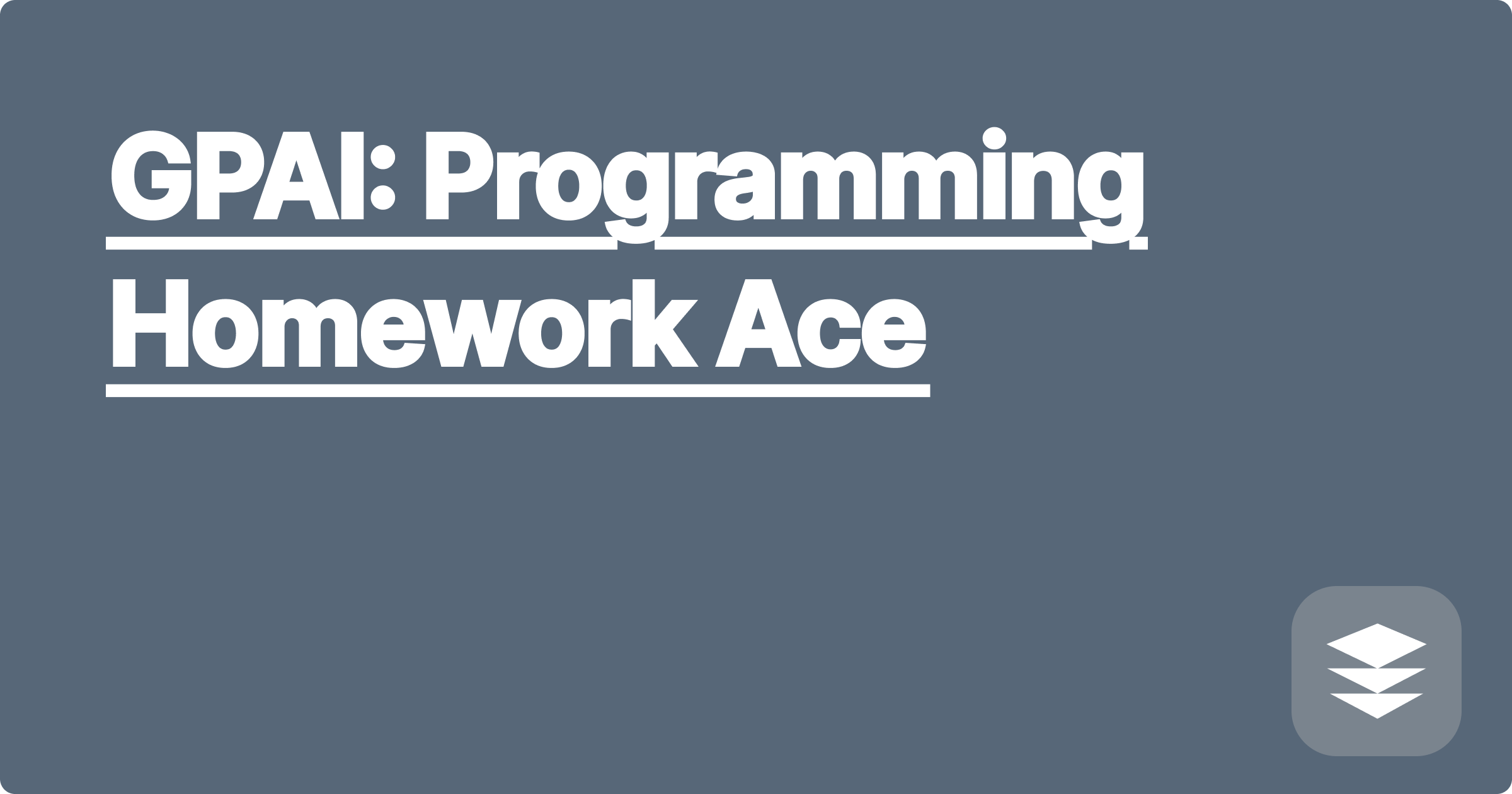
The demanding world of STEM education often presents students and researchers with complex programming challenges. Juggling theoretical concepts with practical application can be overwhelming, leading to frustration and time constraints. Fortunately, the rise of artificial intelligence offers a powerful new toolkit to navigate these difficulties. AI-powered tools are emerging as valuable assistants, capable of providing support, streamlining workflows, and ultimately empowering STEM learners to achieve greater success.
This shift towards AI assistance is particularly significant for STEM students and researchers because it offers a paradigm shift in how they approach problem-solving. Traditionally, tackling complex programming assignments often involved long hours of debugging, searching through documentation, and sometimes hitting seemingly insurmountable roadblocks. AI tools can significantly reduce this burden, allowing students to focus on understanding the underlying concepts and developing critical thinking skills, rather than getting bogged down in the minutiae of syntax and implementation. This allows for a more efficient and engaging learning experience, fostering deeper understanding and promoting innovation.
STEM fields, particularly computer science and related disciplines, heavily rely on programming skills. Students are frequently tasked with assignments that require writing, debugging, and optimizing code in various languages like Python, Java, C++, and more. These assignments can range from simple scripts to complex algorithms, often involving intricate data structures and demanding performance requirements. Furthermore, understanding the theoretical underpinnings of these programming concepts is crucial for building a solid foundation. However, translating theoretical knowledge into practical coding skills can be a major hurdle for many students. The sheer volume of information, coupled with the intricate nature of programming syntax and logic, can create a significant learning curve. This can lead to frustration, decreased motivation, and ultimately hinder academic progress.
AI-powered tools like ChatGPT, Claude, and Wolfram Alpha offer a novel approach to tackling these programming challenges. These tools leverage advanced natural language processing and machine learning algorithms to understand and generate code, provide explanations, and even offer debugging assistance. For example, a student struggling with a specific algorithm implementation can describe the problem to ChatGPT and receive code suggestions, explanations of the logic, and even alternative approaches. Similarly, Wolfram Alpha excels at handling complex mathematical calculations and symbolic manipulations, which are often integral to STEM assignments. By integrating these AI tools into their workflow, students can gain valuable insights, accelerate their learning process, and overcome coding hurdles more efficiently.
Let's consider a scenario where a student needs to implement a sorting algorithm in Python. First, the student can clearly articulate the problem to an AI tool like ChatGPT, specifying the type of sorting algorithm (e.g., merge sort, quicksort) and any specific requirements. Next, the AI tool will generate Python code implementing the requested algorithm. The student can then carefully review the generated code, comparing it to their understanding of the algorithm and identifying any potential areas for improvement. This is a crucial step as it reinforces learning and ensures the student understands the underlying logic. After reviewing the code, the student can execute it within their chosen development environment, testing it with various inputs to verify its correctness. Finally, the student can further refine the code, optimizing for performance or adapting it to specific requirements of the assignment.
Consider the task of calculating the derivative of a complex function like f(x) = x^3 sin(x). A student can input this function into Wolfram Alpha, which will not only provide the derivative (f'(x) = 3x^2 sin(x) + x^3 * cos(x)) but also offer visualizations, alternative representations, and even potential applications of the function. Another example involves using ChatGPT to generate code for a specific data structure like a binary search tree. The student can provide the desired functionality (e.g., insertion, deletion, search) and ChatGPT will generate the corresponding Python code, complete with explanations of the implementation details. These practical applications demonstrate the versatility and power of AI tools in assisting STEM students with a wide range of programming tasks.
To effectively integrate AI tools into your STEM learning journey, it's essential to adopt a strategic approach. First, focus on understanding the underlying concepts before relying on AI for solutions. Use AI as a supplement to your learning, not a replacement. Second, actively engage with the generated code or solutions. Don't simply copy and paste; analyze the output, understand the logic, and identify potential improvements. This will reinforce your understanding and help you develop critical thinking skills. Third, experiment with different AI tools to discover their strengths and weaknesses. Each tool offers unique capabilities, and finding the right tool for the task can significantly enhance your productivity. Finally, always cite your sources properly and adhere to academic integrity guidelines. Using AI tools should complement your learning process, not compromise ethical standards.
To effectively leverage these powerful tools, consider these next steps. Start by exploring the capabilities of ChatGPT, Claude, and Wolfram Alpha through their respective platforms or APIs. Experiment with different programming tasks and observe how these tools can assist you. Then, incorporate these tools into your regular study routine, using them to supplement your learning and tackle challenging assignments. Finally, remember to continuously evaluate your approach and refine your strategies to maximize the benefits of AI assistance in your STEM education.
GPAI: Data Analysis Simplified
GPAI: Your Differential Equations Tutor
GPAI: Perfect Your Lab Reports
GPAI: Programming Homework Ace
GPAI: Your Physics Exam Partner
GPAI: Streamline Your Research
GPAI: Conquer Computer Science